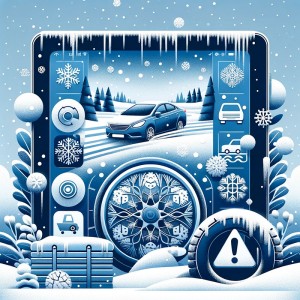 As the snow begins to blanket the scenic landscapes of Pennsylvania, winter driving demands extra caution and preparation. While the serene snowfall can be enchanting, it harbors potential dangers for motorists. Each year, we assist numerous clients involved in winter-related accidents. To minimize risks, we’ve compiled a few essential winter driving tips.
As the snow begins to blanket the scenic landscapes of Pennsylvania, winter driving demands extra caution and preparation. While the serene snowfall can be enchanting, it harbors potential dangers for motorists. Each year, we assist numerous clients involved in winter-related accidents. To minimize risks, we’ve compiled a few essential winter driving tips.
- Prepare Your Vehicle for Winter
Before the heavy snow begins, ensure your car is ready for the season. This includes checking your battery, antifreeze levels, tires, brakes, and heater. Consider investing in winter tires that provide better traction on snow and ice. Keep an emergency kit in your car with items such as blankets, a flashlight, a first-aid kit, and some non-perishable snacks.
- Reduce Speed and Increase Following Distance
Speed is a critical factor in winter accidents. Even if you’re driving a four-wheel drive vehicle, icy roads can be treacherous. Reduce your speed to match the road conditions and increase your following distance to at least five to six seconds. This extra space can be crucial if you need to stop suddenly on a slippery surface.
- Avoid Sudden Maneuvers
Sudden steering, braking, or accelerating can cause your vehicle to lose control. Gentle maneuvers are key. If you start to skid, remain calm, and steer in the direction you want the front of the car to go. Avoid slamming on the brakes as this can exacerbate the skid.
- Beware of Black Ice
Black ice, a thin coating of glazed ice on the roadway, is notoriously difficult to spot. It often looks like a harmless wet patch. Be especially cautious on bridges, overpasses, and shaded areas where black ice is common. If you encounter black ice, don’t panic; keep the steering wheel straight and maintain your speed, avoiding sudden brakes.
- Be Vigilant and Patient
Winter driving requires undivided attention. Avoid distractions like using your phone or fiddling with the radio. Be patient and understand that everything takes longer in winter conditions – from stopping at intersections to navigating turns.
- Know Your Vehicle’s Capabilities
Understand how your vehicle behaves in snowy conditions. Familiarize yourself with its features, such as antilock brakes and electronic stability control, and know how to use them effectively.
- Plan Your Route and Allow Extra Time
Before traveling, check the weather and traffic reports. Choose the safest route, not necessarily the shortest. Allow extra time for your journey, so you’re not tempted to rush in hazardous conditions.
Remember, while these tips can help, the safest strategy is to avoid driving in severe winter weather unless absolutely necessary. If you find yourself in a winter driving accident, contact Comitz Law for legal assistance. Our experienced team can guide you through any challenges and ensure your rights are protected. Stay safe and drive responsibly this winter season. Call us at 570-829-1111 or email us at info@comitzlaw.com.


